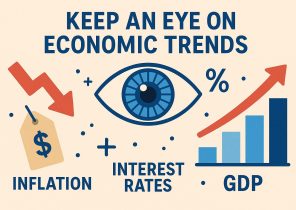The Influence of Emotions in Investment Decisions
In the intricate and often unpredictable world of investing, emotions can profoundly impact decision-making processes. While excitement and fear are natural responses to the fluctuations of the market, seasoned investors frequently advocate for a more analytical and rational approach to investing. Emotional reactions can lead to impulsive behaviors such as panic selling or FOMO (fear of missing out) buying, which sometimes do not align with an investor’s carefully considered long-term objectives.
Understanding Panic Selling
Emotions such as fear can become overwhelming during volatile market conditions, leading investors to engage in panic selling. This phenomenon happens when investors, shaken by sudden negative movements in the market, decide to liquidate their investments quickly. The underlying fear is that of incurring further losses if the market continues its downward trend. While this might initially seem like a prudent measure to halt potential losses, panic selling can inadvertently lock in temporary losses as permanent ones, especially if the market rebounds soon after.
The Dangers of Panic Selling
Panic selling can have severe repercussions for an investor’s financial standing.
Substantial Losses: One notable danger is the tangible financial loss incurred from selling assets during a downturn. These losses, in many instances, might have been avoided if the investor had waited for the market to recover, transforming temporary declines into long-term gains.
Opportunity Cost: By liquidating assets hastily, investors often forgo the opportunity to benefit from a market uptick that could follow shortly after their sell-off. This missed chance for capitalizing on market recovery further compounds their losses.
Stress and Anxiety: Apart from financial setbacks, the practice of continually monitoring market fluctuations can have psychological repercussions. This vigilance breeds heightened stress and anxiety, making objective decision-making even more challenging as investors become caught in a cycle of reactive selling and buying.
FOMO Buying Explained
On the opposite end of the emotional spectrum lies FOMO buying, which occurs when investors purchase assets driven by the burgeoning hype surrounding their increases in value. Motivated by the fear of missing potential significant gains, investors may make hasty purchases without conducting thorough research. While capitulating to FOMO can sometimes result in short-term gains, it equally poses substantial risks.
The Risks of FOMO Buying
– Overvaluation: During periods of hype, assets can become significantly overpriced as demand surges. This overvaluation may not reflect the asset’s intrinsic value, leading to overpayment and subsequent losses when the market corrects.
– Increased Volatility: The act of rushing into the market can expose investors to heightened volatility. A rapidly climbing market can just as quickly reverse, leading to uncertain and potentially unstable outcomes.
– Neglect of Due Diligence: Emotional decisions, particularly those driven by fear of missing out, often sidestep critical fundamental analysis and research. This neglect can result in poor investment choices that do not support the investor’s broader strategy or goals.
Maintaining a Balanced Investment Strategy
Investment success often hinges on the ability to manage and moderate emotional influences. To this end, an investor can employ comprehensive strategies that embed clear directives and adaptable frameworks. A well-crafted investment plan sets forth precise objectives that serve as a roadmap for decision-making, reducing reliance on emotional reactivity. For example, setting specific, measurable goals allows investors to evaluate their progress without being swayed by market whims.
Strategies for Emotional Control
– Establishing a Plan: Developing a well-defined investment plan with clear objectives is crucial. This plan should encompass personal financial targets and timelines and include contingencies for handling market volatility.
– Diversification: Allocating investments across a diverse array of asset classes can mitigate risk. By spreading investments, an investor reduces the potential impact of adverse movements in any single asset or market.
– Regular Review: Conducting periodic reviews of investments against established benchmarks ensures that one’s portfolio remains in alignment with their overarching goals. These reviews provide opportunities to assess performance, rebalance portfolios if necessary, and make informed adjustments grounded in logic and analysis, rather than impulse.
Conclusion
In summary, navigating the investment landscape necessitates a careful balance between seizing opportunities and managing inherent risks. By recognizing the pitfalls associated with emotional decision-making—for instance, the hazards associated with panic selling and FOMO buying—investors can develop and adhere to a more disciplined approach. Such an approach emphasizes decisions grounded in logic and strategic thinking rather than temporary emotional responses. A resolute commitment to a well-articulated investment strategy, bolstered by the practice of regular review and diversification, can fortify investors against the sway of emotions and enhance the likelihood of reaching long-term financial success. Embracing this balanced method not only secures personal wealth but also ensures peace of mind amidst the market’s inevitable ebbs and flows.
This article was last updated on: June 30, 2025








